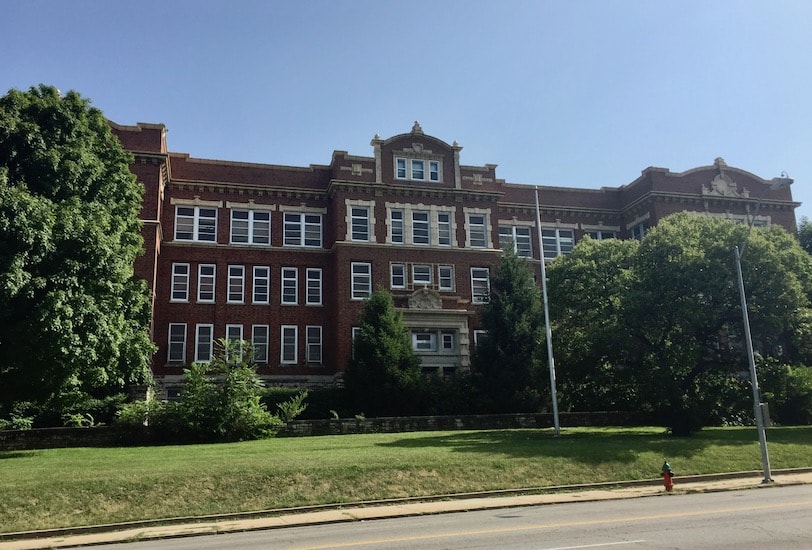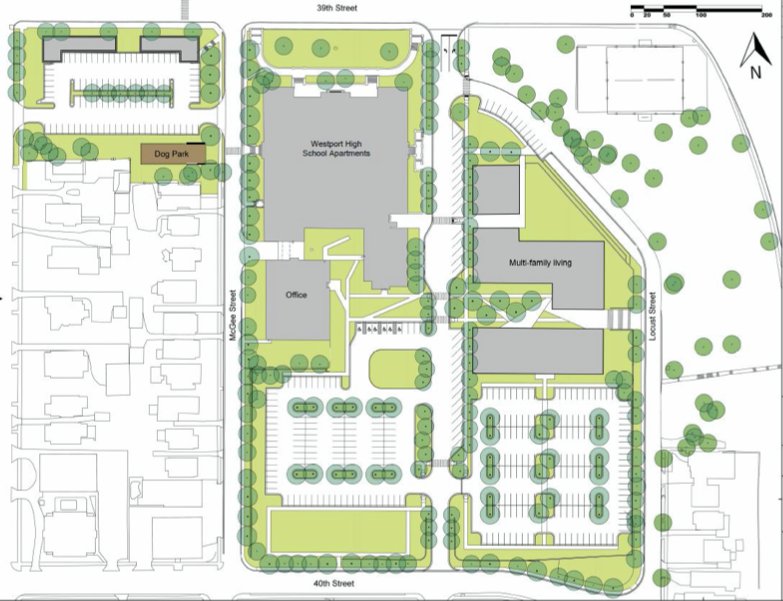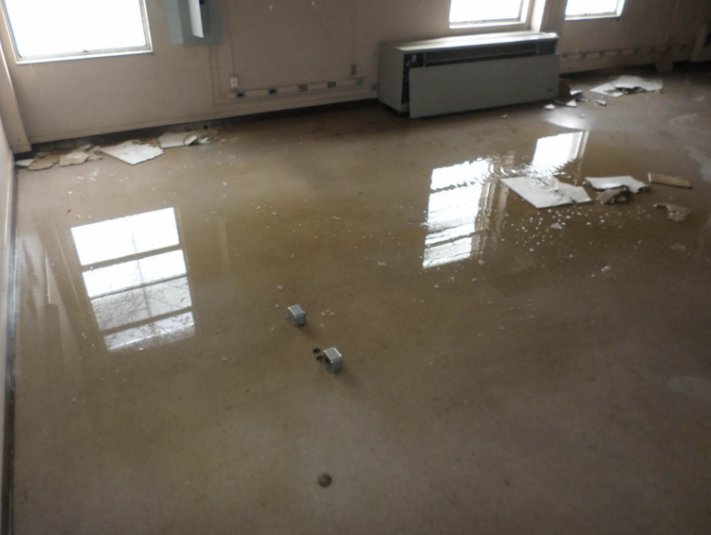Proposal Would Redevelop Historic Westport High as Apartments

Published October 9th, 2020 at 12:15 PM
(Editor’s note: The PIEA board approved a blight study for the Westport High School redevelopment proposal on Oct. 15, the first step in the agency’s review of the plan.)
By Kevin Collison
The developers who renovated the former Westport Middle School into co-working space now are tackling the historic high school across the street, proposing a $45 million apartment redevelopment.
The vacant Westport High School building, which opened in 1908 at 315 E. 39th St., would be renovated as a 133-unit apartment building and 20,000 square-feet of office space under a plan being pursued by HP Development Partners.
Andrew Brain of HP Development, described the proposed renovation of the historic high school as the next phase of the development plan that began with the conversion of the old middle school into Plexpod Westport Commons in 2017.
“We like this area because with this much additional development we can create critical mass,” Brain said. “It’s centrally located with the universities around us.”

Westport High School as it looked in 1910, shortly after its opening. (Image from PIEA application)
The building is located on the transit shuttle between the University of Missouri-Kansas City Volker Campus and its Hospital Hill campus. It’s also 3 1/2 blocks from the planned 39th Street streetcar station.
In fact, the old high school was pitched to UMKC two years ago as a potential site for a new home for its Conservatory of Music and Dance. The building includes an 800-space auditorium and two large gymnasiums.
UMKC however, ultimately decided to pursue its plans for a new Conservatory on its existing Volker Campus.
“The UMKC Conservatory was our big, first choice,” Brain said, “but the university decided against it.”
The new proposal, which is being submitted to the Planned Industrial Expansion Authority next week, would renovate the high school into 22 studio apartments; 100, one-bedroom units, and 10, two-bedrooms.
Brain estimated the monthly rent for a studio would be about $850 and a one-bedroom, $1,200.
“We’re trying to make the units affordable to market-rate consumers,” he said.

The Westport High School property covers 11.4 acres in midtown, future phases could include additional new residential, office and retail construction. (Image from PIEA application)
The Westport High School property occupies about 11.4 acres in the heart of midtown Kansas City including its grounds and playing field.
Brain said the developers have future plans for redeveloping the site beyond the old school building. A third phase could include more multi-family and/or office new construction, and a fourth phase calls for retail development.
All told, including the previous renovation of the middle school, the entire investment could total over $130 million if fully built out.
Financing the ambitious redevelopment plan could be challenging.
The high school, which was closed in 2010 by the Kansas City Public School District, has experienced blight including vandalism and water leaks from frozen pipes, according to a report to the PIEA.
Under a deed attached to the high school when it was sold by the district in 2016, no property tax abatements can be provided as an incentive.

Water on a classroom floor caused by frozen pipes bursting is among the blight findings. (Photo from PIEA application)
Property tax abatements are often a key incentive in redevelopment projects with similar extraordinary costs. They have been criticized by the school district because they reduce the amount of future property tax revenues available to fund its operations.
Brain said the development team, which includes Chip Walsh of Sustainable Development Partners, plans to seek a loan from the U.S. Department of Housing and Urban Development.
Funding also would come from federal and state historic tax credits. The building is listed on the National Register of Historic Places.
The developers also are asking the PIEA board to approve a sales tax exemption on building materials.
There is a possibility however, the school district may be asked to modify its incentive restriction.
“We have said we’re not requesting any (tax abatements) right now,” Brain said, “but we’re leaving the door open.”


